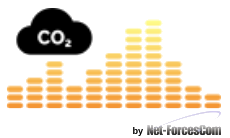🚨 Pre-order the Model O now—quantities are limited! 🌱 Shipping starts February 2025. 👉
About Us
All over the world, there is a big debate on the transmission of COVID (and other pathogens) via airborne aerosol generated as human breathe and the need/monitoring for proper ventilation in public closed spaces where a lot of people breathe the same air for prolonged periods of time. Just think about school classes. In Quebec/Canada, where this project was born, most public school classes are in old buildings with outdated mechanical ventilation systems or no mechanical ventilation. I’m sure the situation is the same in lots of other places around the world.
This is where CO2 monitoring comes in. It’s the perfect indicator of the state of ventilation of a closed space. Normal levels should never reach above 800ppm and at 1500ppm and above it starts to have effects on people. More than that it indicates that there is poor ventilation and that the air might be more saturated in airborne droplets that might be carrying pathogens like COVID.
In Quebec, government monitors CO2 levels in school classes using a 100% manual method. Low percentages of schools have handheld CO2 sensors and some guy (janitor, electrician,...) goes to random classes at semi-random times to manually take a reading 3 times a day and record the measurement on a piece of paper that is sent to the school committee of the area (my guess by fax) that transcribes the information to ve sent to the ministry of education. Talk about a waste of time and a method prone to errors and insufficient data.
My idea was a small Wi-Fi desktop sensor (which could also be wall-mounted) that takes CO2, humidity, and temperature readings every 15 minutes and sends the data to a centralized cloud server. From a portal, anyone authorized can see the measurement (direct values or graphs) and also be alerted on programmable value thresholds. This way there is no human intervention required, and the measurement is continuous and there is history so the results of actions taken to improve the ventilation are observed from the data.
This led to the birth of co2.click !
Display prices in:CAD
